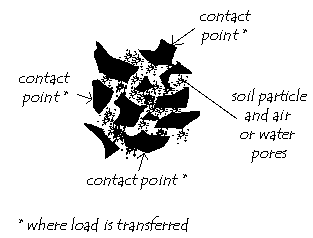

Definition |
||
“Structural soil” is an artificially engineered medium that meets or exceeds road bearing-load requirements for structurally sound pavement design and installation while supporting tree growth, remaining root penetrable, and encouraging deep root growth away from the pavement surface.
Structural soil, generally, accepts the fact that soil compaction is necessary for safe sidewalks and pavement as a cost-effective way to increase the strength and stability of existing soils and to prevent their settlement under or around designed structures as well as to strengthen the nearing capacity of the materials underneath the pavement, and to reduce the shrinking and swelling of soils caused by water movement and frost actions. Therefore, structural soil attempts to create a supportive environment for trees within compacted soils by designing soil mixes that form a stone-matrix and pores, which provide necessary materials for tree growth. The term “structural soil” was invented by Cornell University (CU) Urban Horticulture Institute (UHI) to describe their stone-soil mixed product. The term became popular and widely used by many individuals, who employed similar systems. The term became broadly accepted to illustrate the concept, and does not indicate a particular product. This term is not suited to portray materials since many similar but different materials fall into this concept of “structural soil.” According to Urban and Patterson, the term “structural soil” began to include materials not originating from the idea of CU-Soils. They can be summarized into four different types:
|
||
|
||
